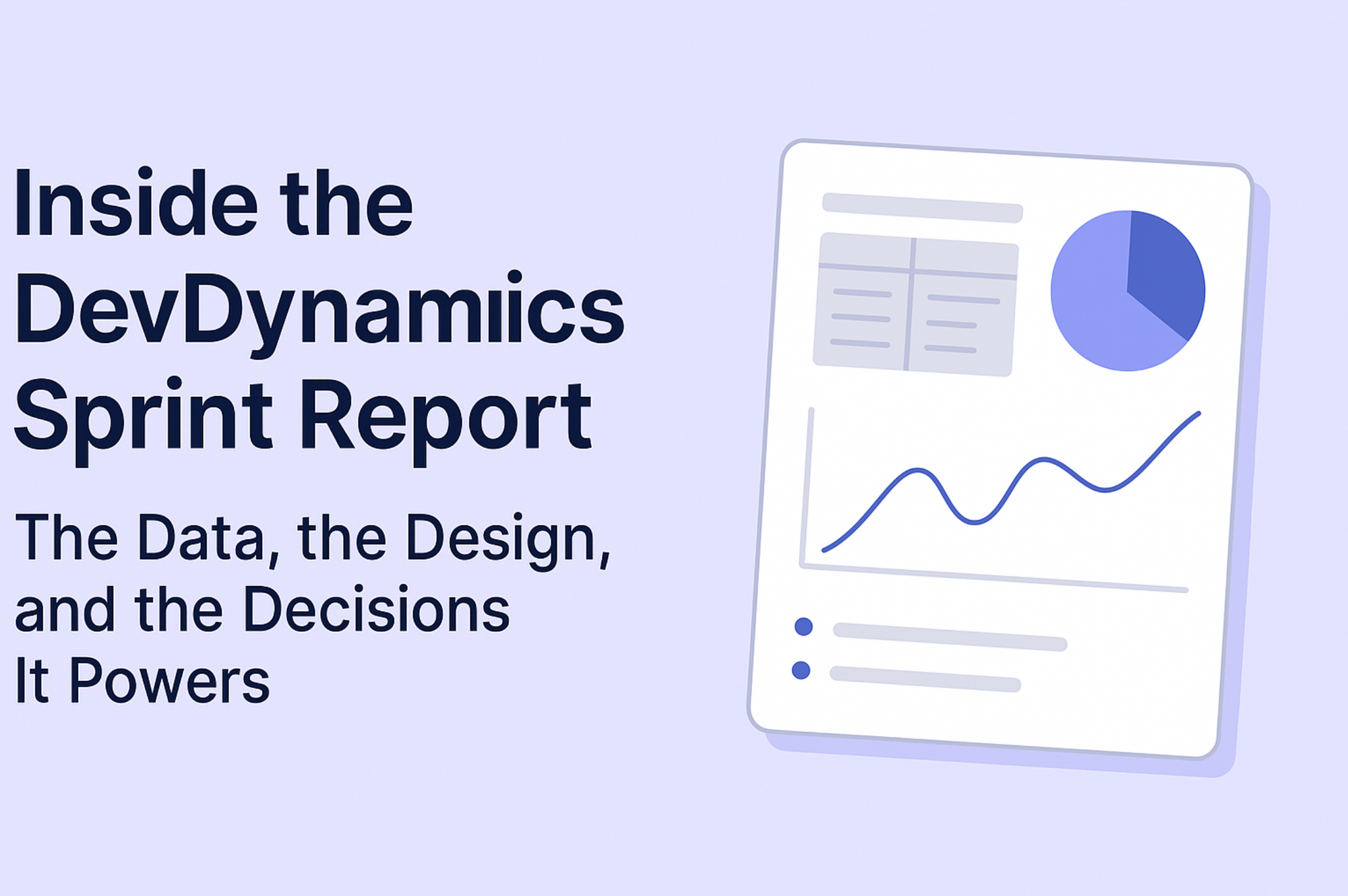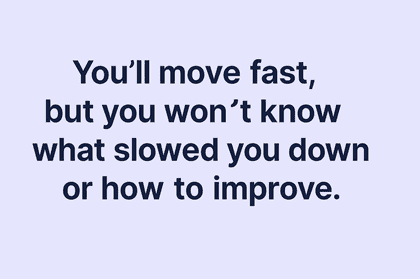Inside the DevDynamics Sprint Report: The Data, the Design, and the Decisions It Powers

Agile delivery isn't just about speed. It's about repeatability, reliability, and continuous improvement. And yet, most sprint summaries leave you with more questions than answers.
You know what got done. But you don’t know why half of what you planned didn’t. Or why you keep carrying the same task across three sprints. Or why certain team members are consistently overloaded while others wait for tickets.
DevDynamics Sprint Reports are built to answer these questions. Automatically. With context, not clutter. With clarity, not dashboards.
This article breaks down how the report works, what it shows, and why it’s become an essential tool for modern engineering teams.
Why We Built It
Most tools focus on tracking. DevDynamics is focused on understanding. Jira, GitHub, and CI systems all collect pieces of the truth. But none connect them to explain:
- What changed mid-sprint?
- Where did scope creep come from?
- Why was velocity off despite accurate estimation?
Engineering leaders don’t need more graphs. They need narratives: what was planned, what actually happened, and what to improve.
That’s what the DevDynamics Sprint Report is designed to deliver.
What Powers the Report
The Sprint Report is generated by integrating across:
- Jira: Issue history, story points, status transitions
- GitHub/GitLab: PR lifecycle, review behavior, authorship and merge times
- CI/CD systems: Deployment frequency, batch size, rollback patterns
- Team structures: Ownership, contributions, workload distribution
This data is not just pulled—it’s cleaned, enriched, time-aligned, and analyzed to produce insight-rich summaries for every sprint.
Anatomy of a Sprint Report
The DevDynamics Sprint Report is organized into five core blocks:
1. Planning vs. Delivery
- Committed vs. completed work (issues and story points)
- Carryover from previous sprints
- Removed or dropped work
2. Scope Change
- Unplanned work added mid-sprint
- Type and priority of scope creep
- Patterns across sprints
3. Execution Timeline
- Issue cycle time (start to done)
- Time in each workflow state
- PR lifecycle: open-to-merge, review latency, inactivity
4. Contributor Insights
- Ownership patterns
- Workload heatmap by assignee
- Under- and over-contributors
5. Risk and Recommendation Engine
- Repeat blockers
- Stalled work detection
- Review/merge bottlenecks
- Smart suggestions based on trend history
How Engineering Leaders Use It
DevDynamics Sprint Reports are used across the sprint lifecycle:
Before the Sprint
- Refine planning accuracy with historic velocity + spillover trends
- Set realistic load expectations
- Allocate work based on contributor balance
During the Sprint
- Detect and track mid-sprint scope creep
- Spot unreviewed PRs and delayed merges
- Address at-risk issues before they become carryover
After the Sprint
- Use factual, pattern-rich insights in retros
- Avoid speculative debates ("I think this slipped because…")
- Identify persistent friction points
Across Quarters
- Use cumulative sprint data to report on team performance
- Align engineering inputs with OKRs and delivery commitments
What Makes This Report Different
This isn’t a prettier dashboard or a Jira export with lipstick. The DevDynamics Sprint Report is:
- Narrative-first: It tells the story of the sprint, not just what happened but why it happened
- Auto-generated: No one needs to spend 1.5 days compiling this manually
- Configurable: Choose what matters to your teams and stakeholders
- Actionable: It shows what to fix and why it matters
Velocity without visibility is a trap.

The DevDynamics Sprint Report is designed to change that. It brings together your tools, your workflows, and your people into a single, unified view of how your sprint actually went and what you can do better next time.
It’s built for engineering leaders who want to run better teams, not just faster ones.
Book a demo to see how Sprint reports can help you run better sprints

